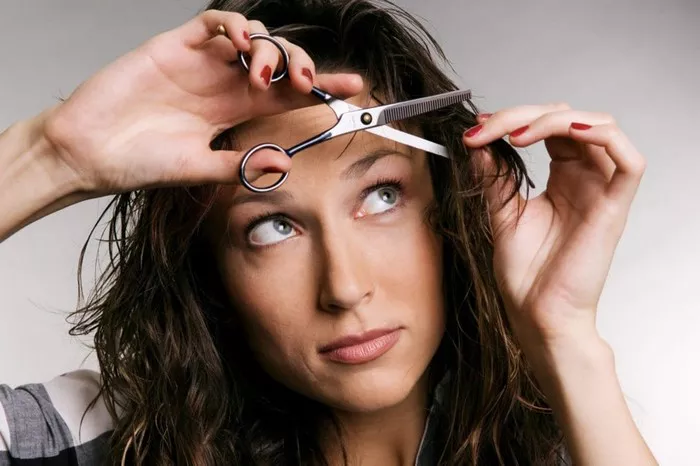If you’ve been struggling with alopecia, the prospect of regrowing your hair can be a source of hope and excitement. Alopecia can be a challenging condition to deal with, but there are strategies and treatments that can help you on your journey to reclaim a full head of hair. In this article, we’ll delve into effective methods and tips to help you grow your hair back from alopecia.
1. Understanding Alopecia and Its Types
Alopecia, a condition that results in hair loss, can manifest in several forms, each with its unique characteristics. To effectively combat it, it’s crucial to identify the type you’re dealing with. Here are the primary types of alopecia:
a. Androgenetic Alopecia: Commonly known as male pattern baldness in men and female pattern baldness in women, this is a genetic form of hair loss.
b. Alopecia Areata: This type of alopecia is an autoimmune disorder that leads to sudden, patchy hair loss.
c. Scarring Alopecia: This is a more severe form, where hair follicles are permanently damaged, leading to irreversible hair loss.
d. Traction Alopecia: Often caused by excessive hair pulling or tight hairstyles, this form of alopecia can be reversible.
Understanding the type of alopecia you have will be the first step in determining the best approach for hair regrowth.
2. Explore Medical and Topical Treatments
There are various medical and topical treatments available to stimulate hair regrowth in individuals with alopecia:
a. Minoxidil: Also known as Rogaine, this topical solution is FDA-approved and has been proven to help regrow hair. It’s widely used for androgenetic alopecia.
b. Finasteride: A prescription medication, this oral drug is primarily used by men to treat male pattern baldness. It inhibits the hormone responsible for hair loss.
c. Corticosteroid Injections: For alopecia areata, corticosteroid injections into the scalp can help stimulate hair growth in the affected areas.
d. Topical Corticosteroids: These can be prescribed to reduce inflammation and promote hair regrowth in cases of alopecia areata or scarring alopecia.
e. Platelet-Rich Plasma (PRP) Therapy: PRP therapy involves injecting your own platelet-rich plasma into the scalp to stimulate hair follicles. This is often used for androgenetic alopecia.
3. Nutritional Support for Hair Growth
A balanced diet is essential for overall health and can also promote hair regrowth. Ensure you’re getting these key nutrients to support healthy hair:
a. Biotin: This B-vitamin is known for its role in hair growth. Foods like eggs, nuts, and sweet potatoes are rich sources.
b. Vitamin D: A deficiency in vitamin D has been linked to hair loss. Get more sunshine or consider supplements if necessary.
c. Omega-3 Fatty Acids: Found in fatty fish like salmon and flaxseeds, these fats can help nourish your hair and scalp.
d. Iron: Iron deficiency can lead to hair loss, so include lean meats, beans, and leafy greens in your diet.
e. Zinc: Essential for hair growth, foods like oysters, nuts, and seeds are excellent sources of zinc.
4. Manage Stress and Anxiety
Stress can exacerbate hair loss in individuals with alopecia. Practicing stress management techniques, such as meditation, yoga, or deep breathing exercises, can help reduce stress and promote a healthier scalp environment for hair regrowth.
5. Avoid Harsh Hair Care Practices
Protect your existing hair while promoting regrowth by avoiding harsh hair care practices:
a. Avoid Tight Hairstyles: Refrain from styles that put excessive tension on your hair, as this can lead to traction alopecia.
b. Limit Heat Styling: Excessive heat from styling tools can damage your hair. Use them sparingly and always apply heat protectant products.
c. Gentle Hair Care: Use a sulfate-free shampoo and conditioner, and avoid excessive brushing or combing, which can lead to hair breakage.
6. Patience and Consistency
Growing your hair back from alopecia is a journey that requires patience and consistency. It’s important to understand that results may not be immediate, and the regrowth process can vary from person to person. Stick to your chosen treatment plan and consult with a dermatologist or healthcare professional for guidance and monitoring of your progress.
See Also: Will Exercise Help Hair Growth: What You Need To Know
In conclusion
While alopecia can be a challenging condition to face, there are multiple strategies and treatments available to help you regrow your hair. Understanding your type of alopecia, exploring medical and topical treatments, maintaining a balanced diet, managing stress, and adopting gentle hair care practices are all steps that can contribute to a successful journey towards hair regrowth. Remember, patience and consistency are key in your pursuit of a fuller, healthier head of hair.


